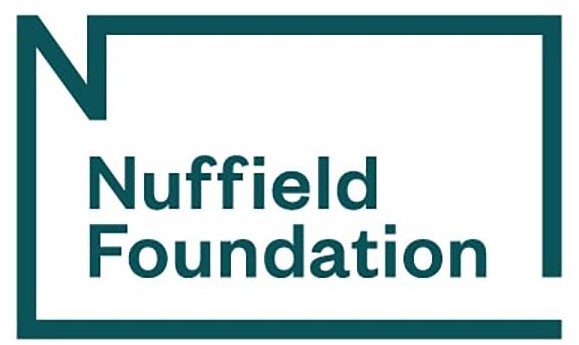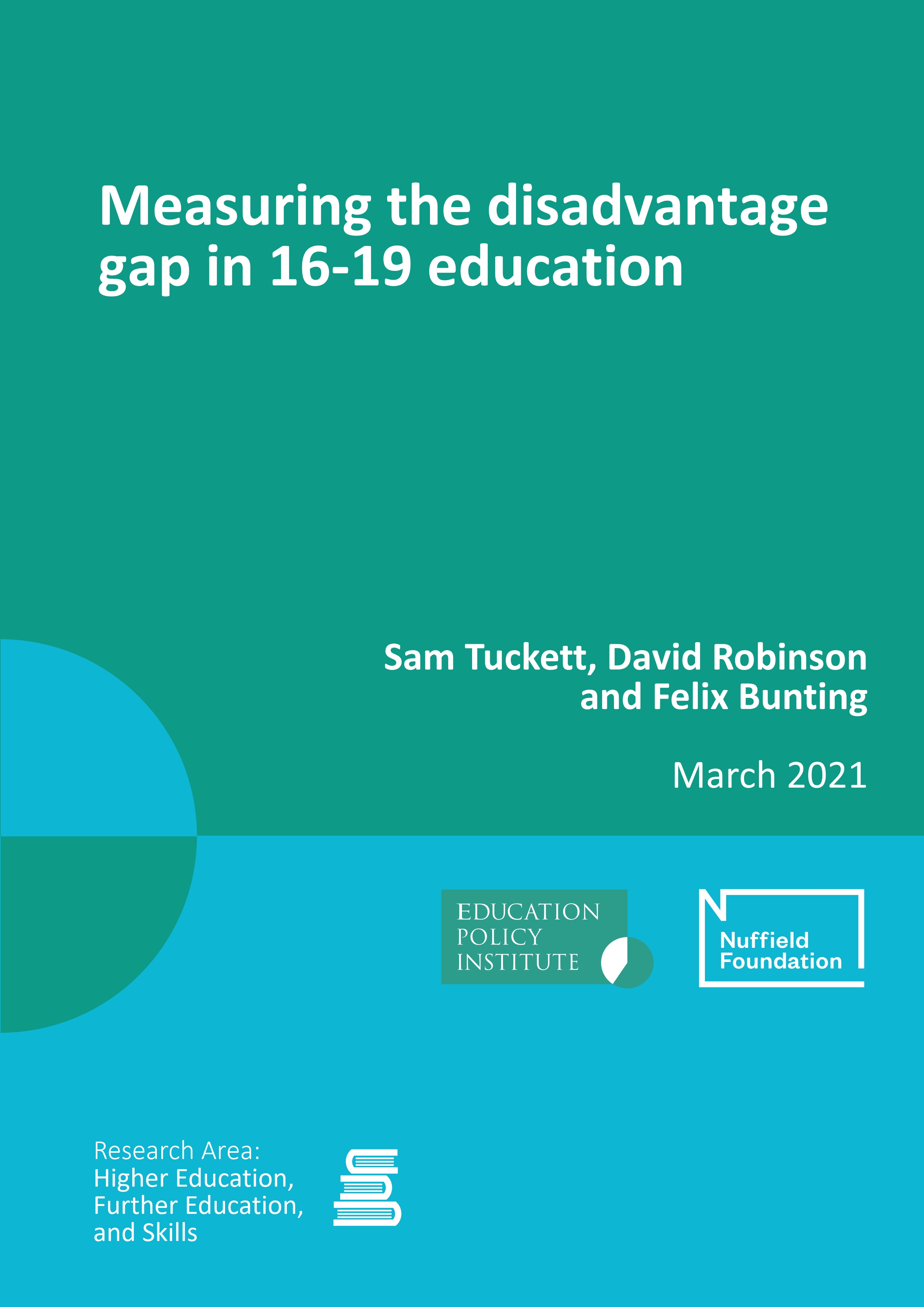This report by the Education Policy Institute (EPI), funded by the Nuffield Foundation, finds that poorer students in sixth forms and colleges trail their more affluent peers by as many as three A level grades when taking qualifications at this level.
The new exploratory research finds that the disadvantage gap – the gap in educational attainment between poorer students and their peers – is substantial during the 16-19 education phase, with poorer students continuing to see far worse educational outcomes than their better off peers.
To date, most existing research on the disadvantage gap in education has focused almost entirely on the outcomes of pupils at secondary school level and below. There has been very little understanding of what the gap is after this age, for those older students enrolling in sixth form or college.
The EPI research, which is based on an entirely new, provisional methodology, brings into sharp focus the extent of educational inequality among older students at this critical period in their lives, just as they enter adulthood.
The disadvantage gap at this education phase is found to vary considerably across the country: poorer students are the equivalent of five whole A level grades behind their more affluent peers in some areas of England. In other areas, poorer students are level with, or even ahead of, their more affluent peers.
The 16-19 education phase includes students in sixth forms and colleges covering those taking qualifications including A levels, and vocational, technical and lower-level qualifications.
With disadvantaged students shown to face further attainment losses at this phase, on top of those previously experienced in school, the new findings also provide evidence for the need for new interventions aimed at reducing the gap in 16-19 education.
To prevent disadvantaged sixth form and college students from falling further behind, the report concludes that there is a strong case for additional government funding for 16-19 education. Targeted funding is needed to address learning losses caused by the pandemic, which are likely to disproportionately impact the poorest, and will have likely exacerbated the already large disadvantage gap among students at this stage of education.
You can download the full report here.
Key findings
The disadvantage gap in sixth forms and colleges
Based on a new, exploratory analysis of the disadvantage gap at this phase, the research finds that:
- There is a large gap in attainment, equivalent to almost three A level grades, when comparing (on average) the best three qualifications of disadvantaged students (those who had claimed free school meals in secondary school) and the best three qualifications of their non-disadvantaged peers.
- For the very poorest sixth form and college students – those classed as “persistently disadvantaged” – who were on free school meals for over 80% of their time at school – the gap is even wider, equivalent to four A level grades.
- There was no progress in closing the 16-19 gap between 2017 to 2019 and this is likely to now be worsened by the unequal impact of the pandemic on learning loss, along with the very different approaches to assessments seen in academic and vocational qualifications during 2020.
Which factors explain the disadvantage gap at sixth form and college level?
When exploring the contribution of different factors to the large gap at this phase, the research finds that:
- A large proportion of the gap (39%) at the 16-19 education phase can be explained by students’ prior attainment at school (GCSE). Poorer students enter sixth form and college at a significant disadvantage compared to their more affluent peers, having on average, achieved far lower grades previously at school.
- The type of qualifications taken by poorer students also explains a large part of the gap in 16-19 education (33% of the gap): disadvantaged students are more likely to enter fewer, and lower-level qualifications.
- However, while poorer students’ previous level of academic achievement and type of qualification play a strong role in the gap at 16-19, socio-economic disadvantage may be contributing to these students falling even further behind during this phase.
- When controlling for student’s prior attainment and qualification type, poorer students are still shown to achieve poorer grades compared to their more affluent peers – around the equivalent of half an A level grade. This is significant, as it shows poorer students face an extra attainment penalty during the 16-19 education phase.
How does the sixth form and college gap vary across the country?
While on average, poorer students in sixth forms and colleges trail their more affluent peers by the equivalent of three A level grades, there are great disparities across England:
- Poorer students are the equivalent of five whole A level grades behind their more affluent students nationally in Knowsley (5.4 A level grades behind) North Somerset (4.8 grades behind) and Stockton-on-Tees (4.7 grades behind).
- In sharp contrast, in many London areas, poorer students are level with or even ahead of their more affluent peers nationally. The areas with the lowest disadvantage gaps in the country are Southwark (poorer students are 1.2 A level grades ahead), Redbridge (0.5 grades ahead) and Ealing (0.5 grades ahead).
- Of the 20 local authorities in the country with the smallest 16-19 disadvantage gaps, almost all of them are situated in or around the London area, with the exception of Redcar and Cleveland (20th smallest gap).
The full local authority tables can be found in the report here.
This report is funded by the Nuffield Foundation. The Nuffield Foundation is an independent charitable trust with a mission to advance social wellbeing. It funds research that informs social policy, primarily in Education, Welfare, and Justice. It also funds student programmes that provide opportunities for young people to develop skills in quantitative and scientific methods. The Nuffield Foundation is the founder and co-funder of the Nuffield Council on Bioethics and the Ada Lovelace Institute. The Foundation has funded this project, but the views expressed are those of the authors and not necessarily the Foundation.



